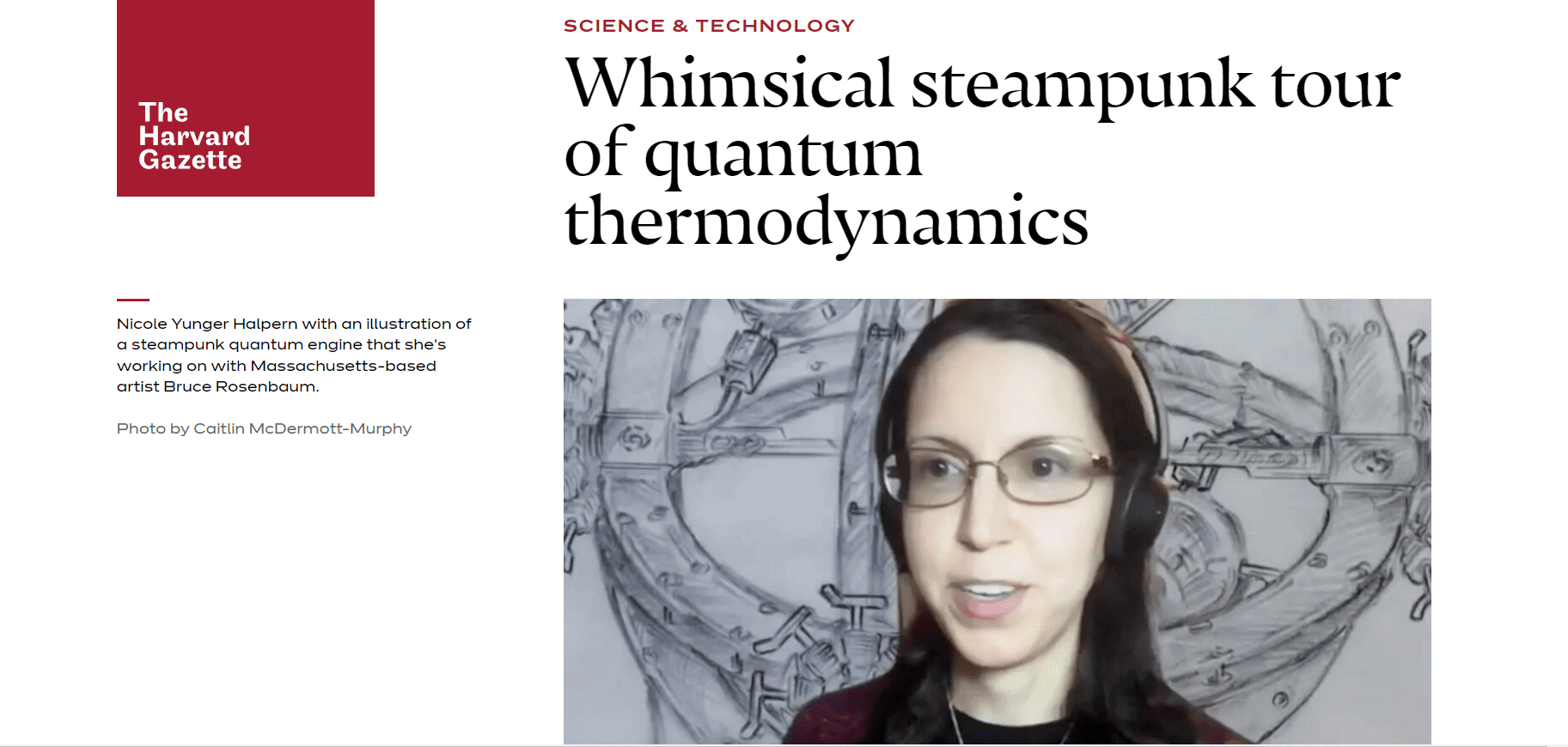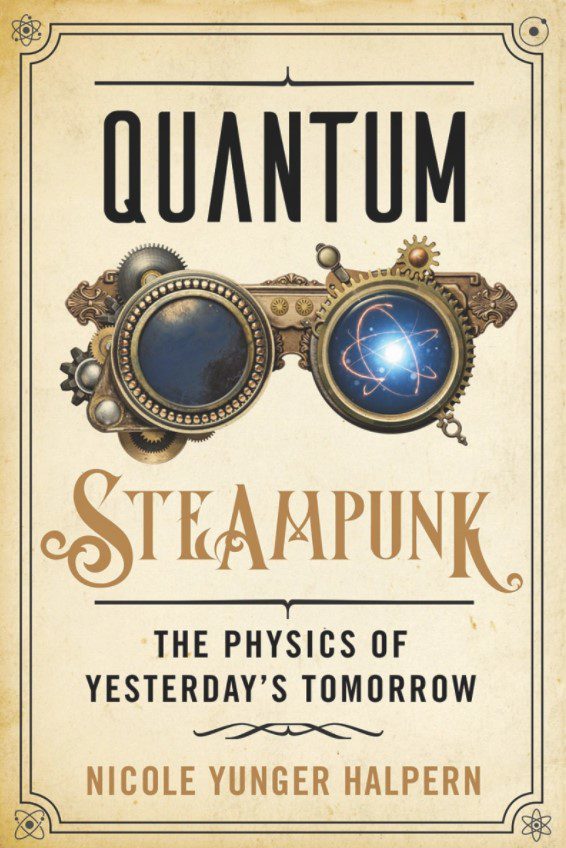

Book uses examples of genre that blends futuristic technology with Victorian style to explain concepts of revolutionary new science
What do quantum computers have to do with smog-filled London streets, flying submarines, waistcoats, petticoats, Sherlock Holmesian mysteries, and brass goggles?
A whole lot, according to Nicole Yunger Halpern. Last week, the theoretical physicist joined Jacob Barandes, co-director of graduate studies for physics, to discuss her new book, “Quantum Steampunk: The Physics of Yesterday’s Tomorrow.” In it, Yunger Halpern dissects a new branch of science — quantum thermodynamics, or quantum steampunk as she calls it — by fusing steampunk fiction with nonfiction and Victorian-era thermodynamics (the heat and energy that gets steam engines pumping) with quantum physics. Yunger Halpern presents a whimsical lens through which readers can watch a “scientific revolution that’s happening in real time,” Barandes said, exploring mysteries even Holmes couldn’t hope to solve, such as why time flows in only one direction.
“This fusion of old and new creates a wonderful sense of nostalgia and adventure, romance and exploration,” Yunger Halpern said during a virtual Harvard Science Book Talk presented by the University’s Division of Science, Cabot Science Library, and Harvard Book Store. In steampunk, she continued, “fans dress up in costumes full of top hats and goggles and gears and gather at conventions. What they dream, I have the immense privilege of having the opportunity to live.”
Yunger Halpern, a fellow of the Joint Center for Quantum Information and Computer Science and an adjunct assistant professor at the University of Maryland, uses steampunk, which marries Victorian style and futuristic technology, to introduce readers to the complex and fantastical world of quantum thermodynamics. The new field merges quantum physics, information science, and energy science to study new ways to power cars, charge batteries, encrypt information, and cool quantum computers.
“How can we extend the Victorian theory of thermodynamics from large everyday-type systems, such as steam engines, to small quantum and information-processing systems?” Yunger Halpern asked, and then answered: “We reach back to the past and head to the future.”
To guide their conversation, Barandes focused on Yunger Halpern’s ability to explain dense quantum concepts with whimsy. While “Quantum Steampunk” is mostly nonfiction, Yunger Halpern introduces each chapter with a steampunk-style fictional tale, featuring characters with names like Audrey and Baxter. These aren’t just Victorian-era scientific renegades flying around in dirigibles and tinkering with time machines; they’re the steampunk versions of Alice and Bob — aliases scientists commonly give to quantum particles to make their behaviors easier to describe.

